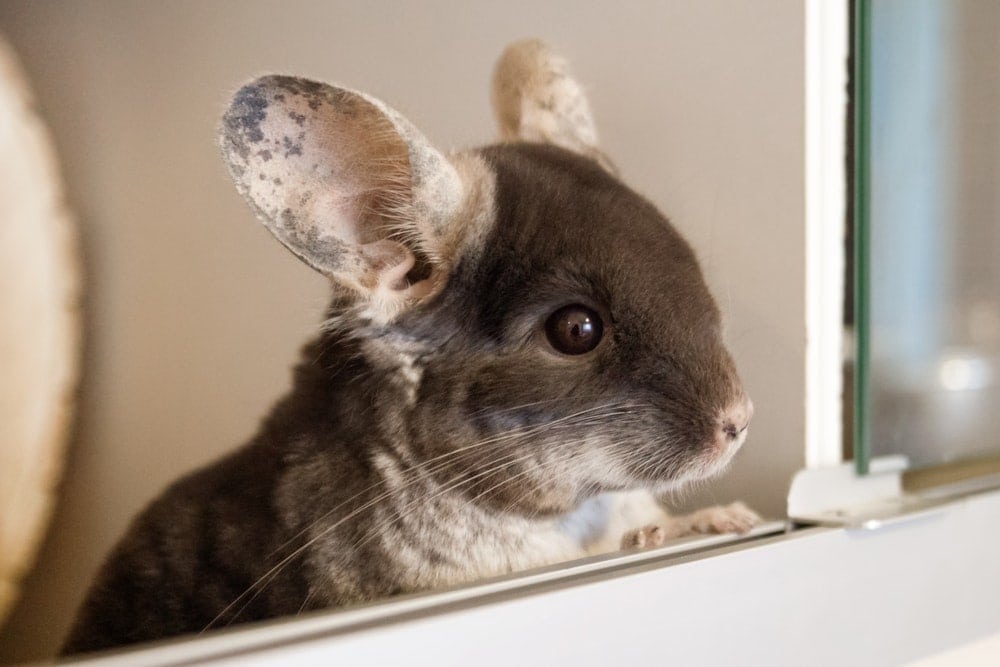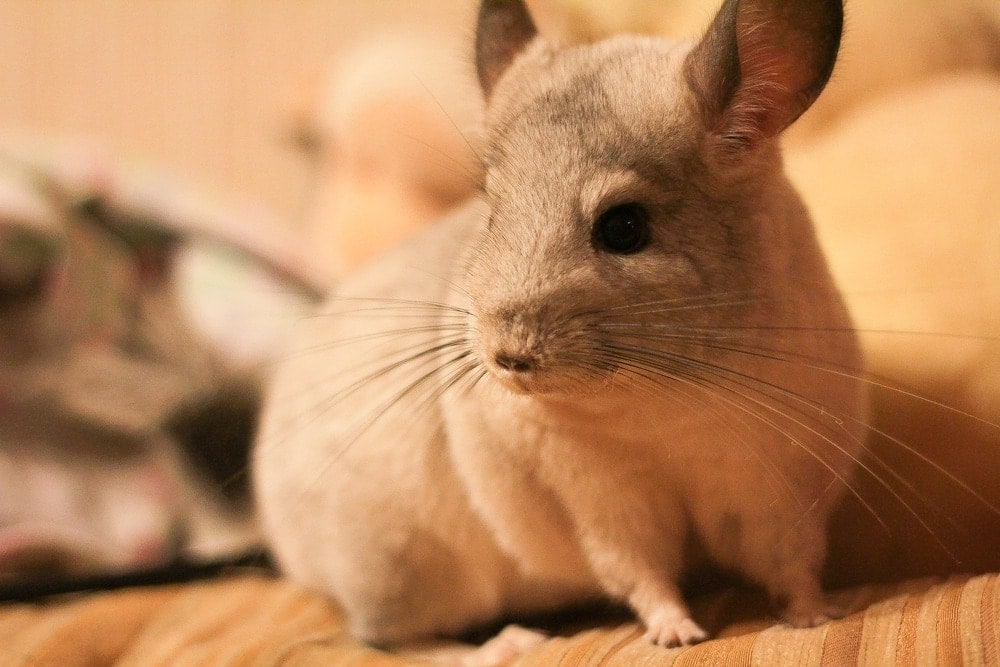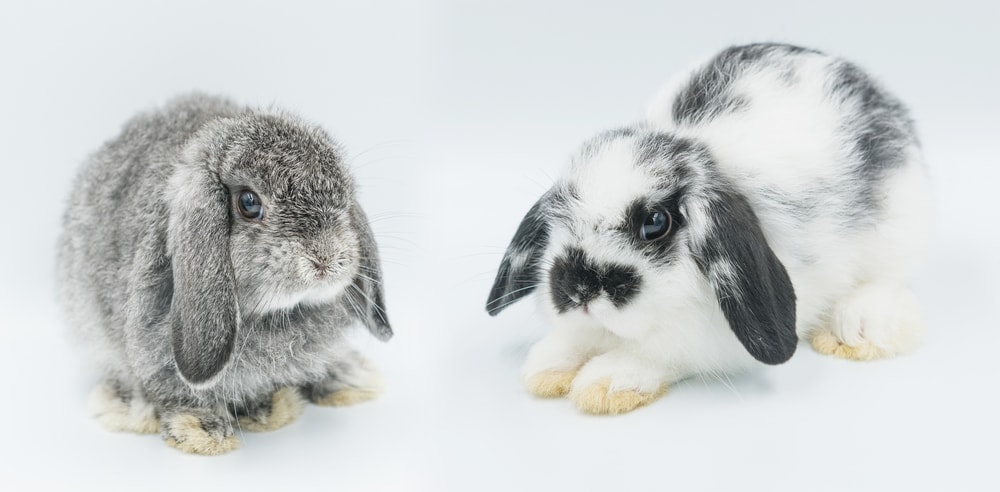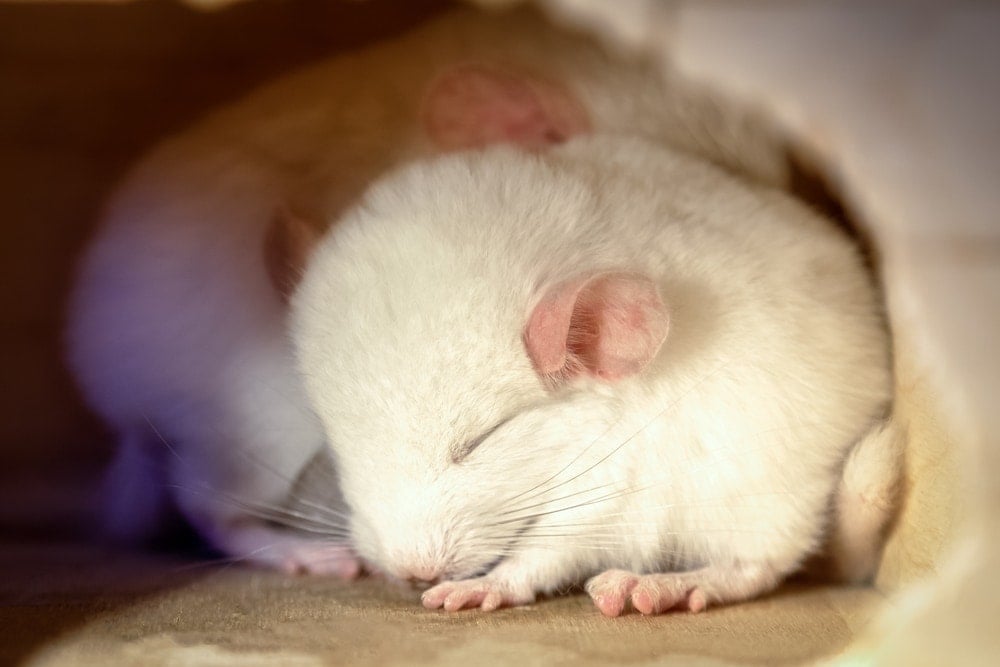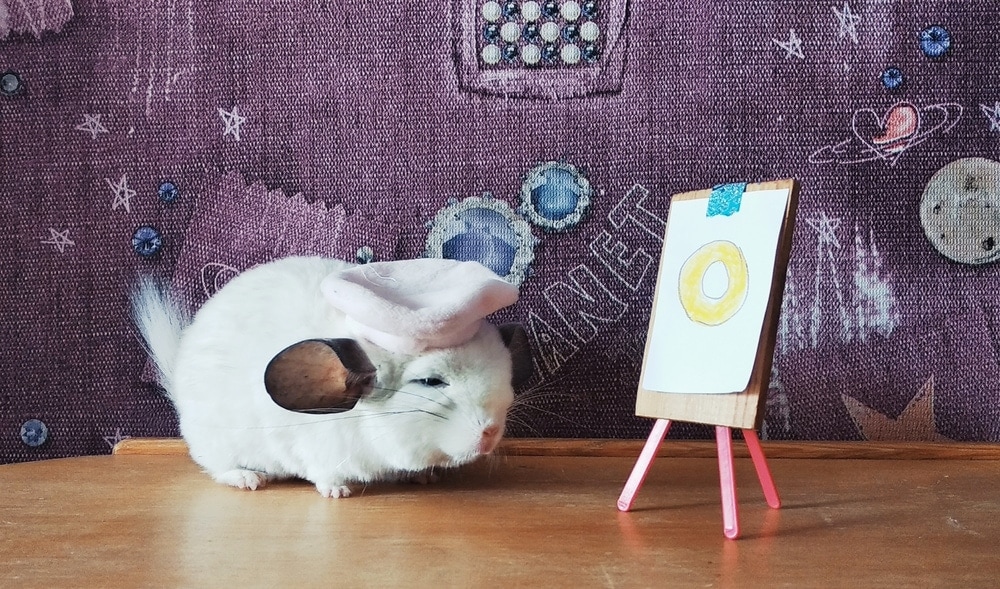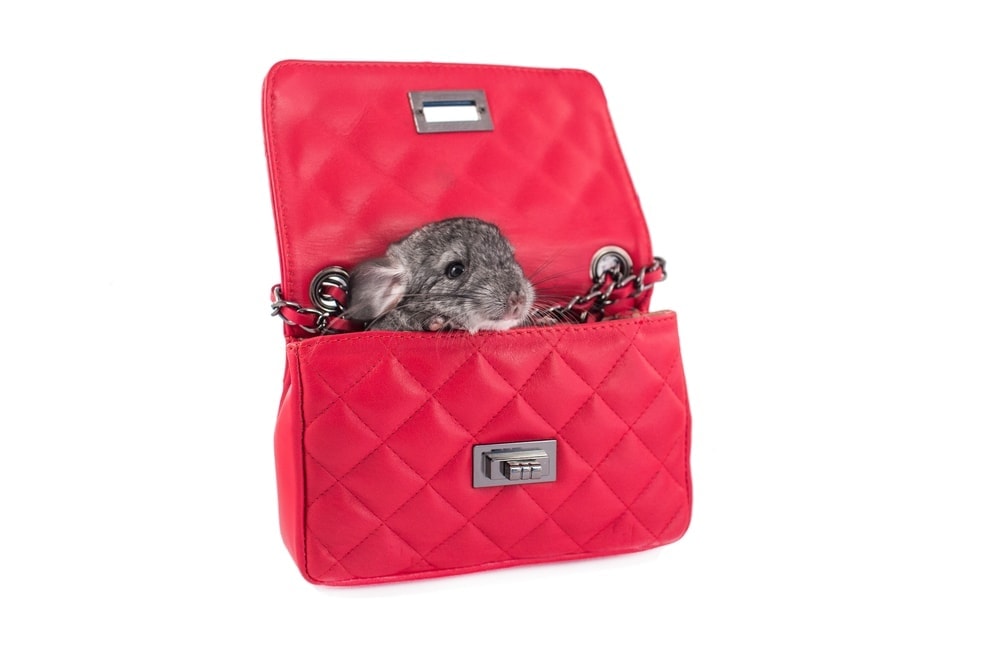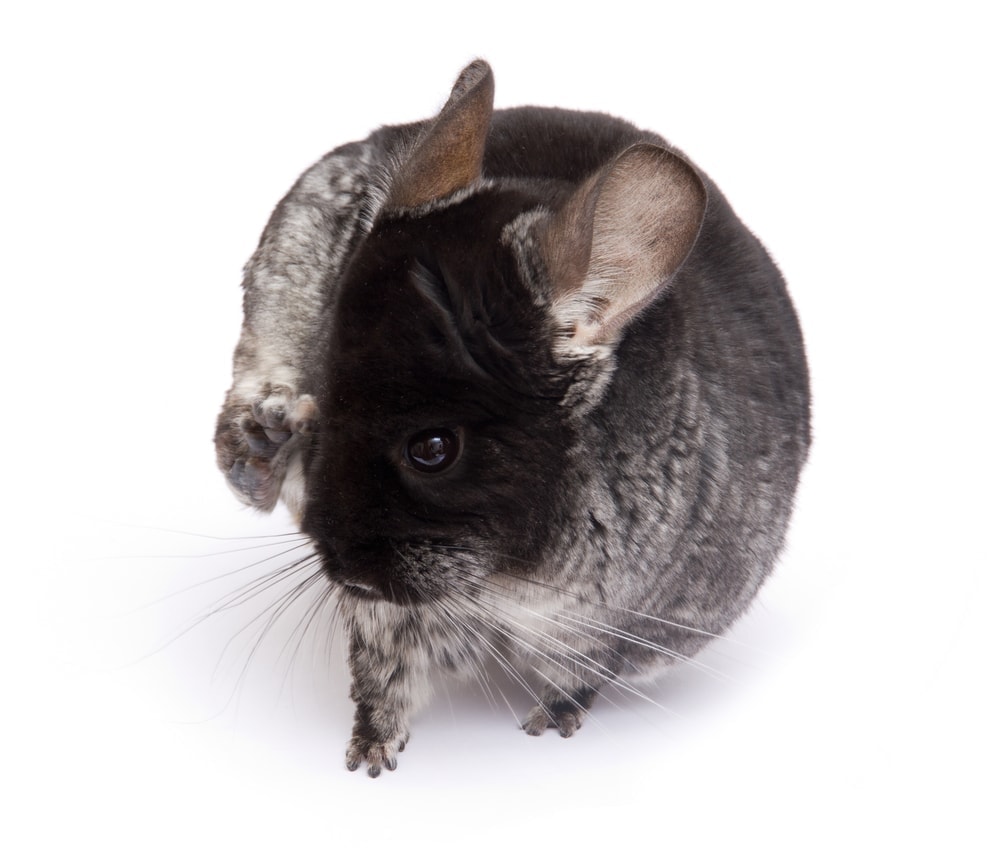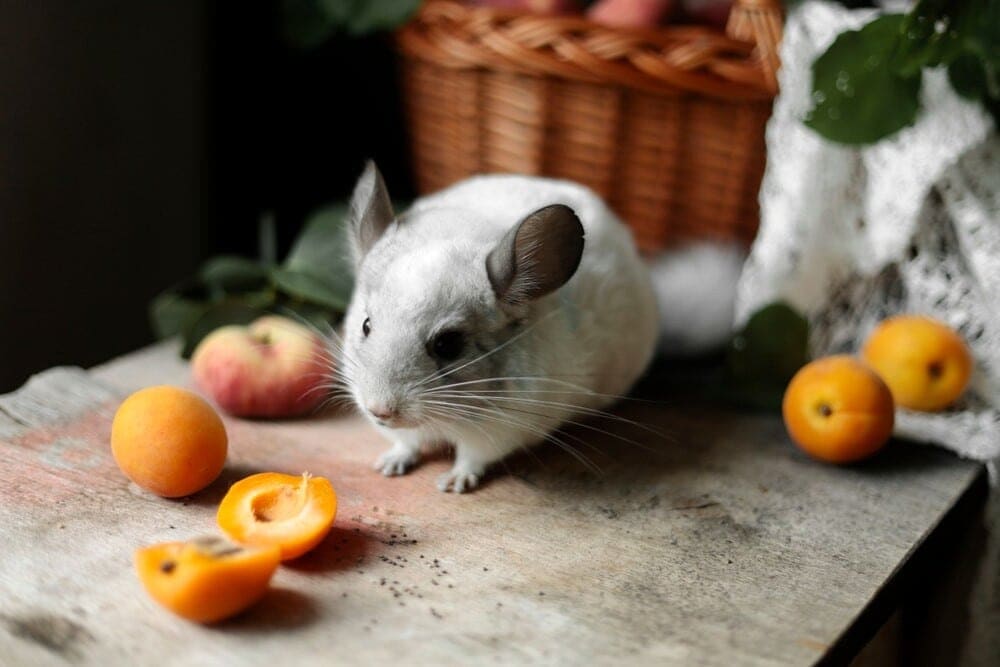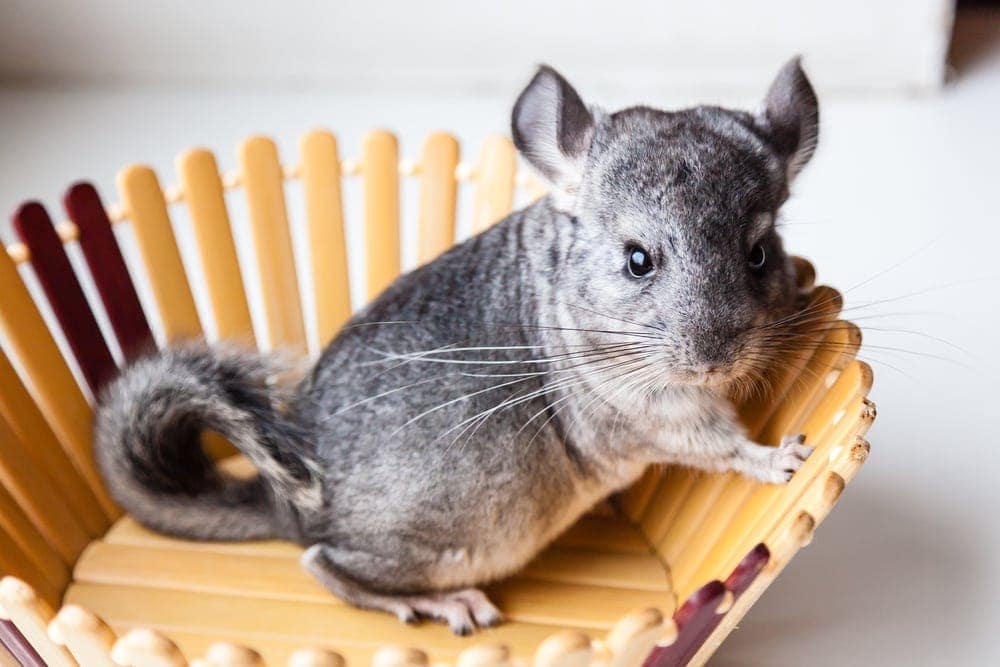If you are going to get a chinchilla, you will need to know what their tolerance is with regards to temperature.
This is a crucial part of keeping your pet healthy and comfortable in its new environment. We will take an in depth look at this issue so you don’t run into any problems later on.
What Temperature is Best for Chinchillas?
Chinchillas tend to be most comfortable in a temperature range of 60 to 70 degrees Fahrenheit. If possible, it is best to keep the temperature at 65 degrees Fahrenheit (give or take a degree) at all times.
The fact is that these animals don’t do well at all with extreme heat or humidity. Once the temperature in their environment exceeds 80 degrees Fahrenheit, overheating becomes a real issue. While they can tolerate high temperatures for short periods, prolonged exposure is very harmful to them.
The farther the temperature goes out of your pet’s comfort zone, the more stressed they will become. Your pet will likely experience both physical and mental stress, which can take a serious toll on their overall health.
How to Maintain the Right Temperature for Your Chinchilla
It is very important that you do everything possible to maintain an ideal temperature for your chinchilla at all times. This will help you avoid a wide range of health issues.
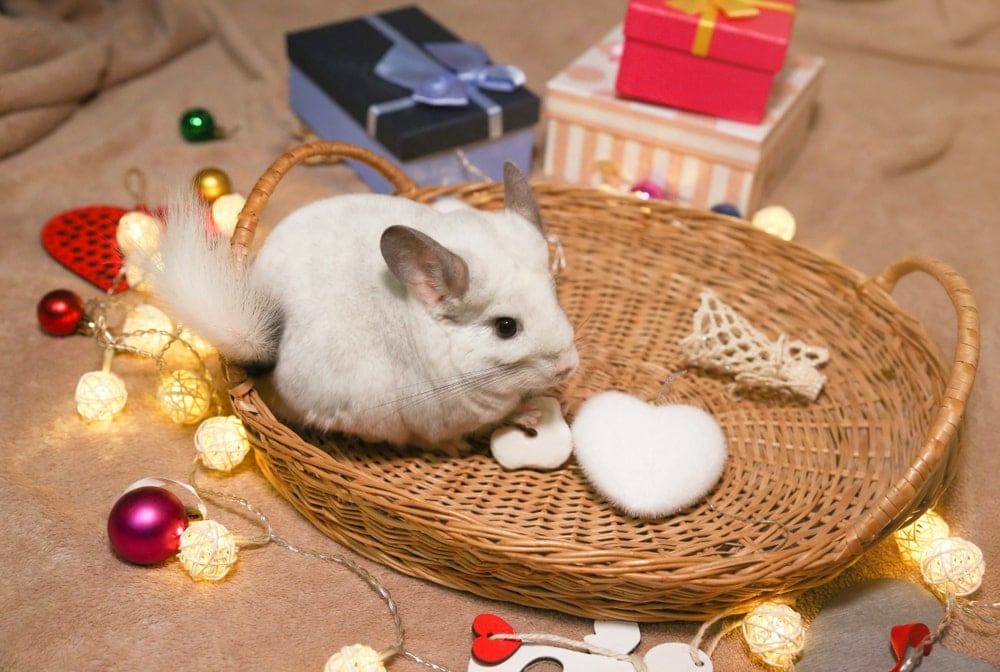
1. Limit Exercise During the Hotter Months
You’ll want to make a point of removing the exercise wheel from your chinchilla’s cage during the hotter months of the year. If you let them run around outside sometimes, you should only do so for about ten minutes at a time. This will help prevent heatstroke, which can easily be fatal for these animals.
2. Give Your Chinchilla its Own Room
It is best to give your chinchilla its own room, as it will be a lot easier to control the temperature of their environment. This is also a good idea because it will reduce your pet’s exposure to loud noises, which can quickly stress them out.
If your chinchilla’s room is too hot or cold, you can always use a space heater or portable air conditioner. Just make sure that you don’t turn up either one too high, as it could have a negative effect on your pet. Keep a close eye on the overall temperature of the room each day.
If this is simply not an option, you should avoid putting your pet’s cage near any appliances that give off heat. This could potentially cause your chinchilla to become too hot.
3. Cooling Pads
There are little cooling pads that you can buy specifically for chinchillas. You can place a couple of these pads in your pet’s cage during the warmer months. This will give them a nice little spot to cool down if they start getting too warm.
Make sure that you take the time to look around find the best cooling pads to get your pet. Keep a close eye on them after you put the pads in the cage. You’ll want to know if your chinchilla starts nibbling on the pads.
4. Minimize Natural Lighting
If your chinchilla’s cage is close to a window, you’ll want to keep the blinds drawn pretty much all the time, especially in the afternoon. This will help with regulating the temperature and allowing your pet to maintain a normal wake/sleep cycle.
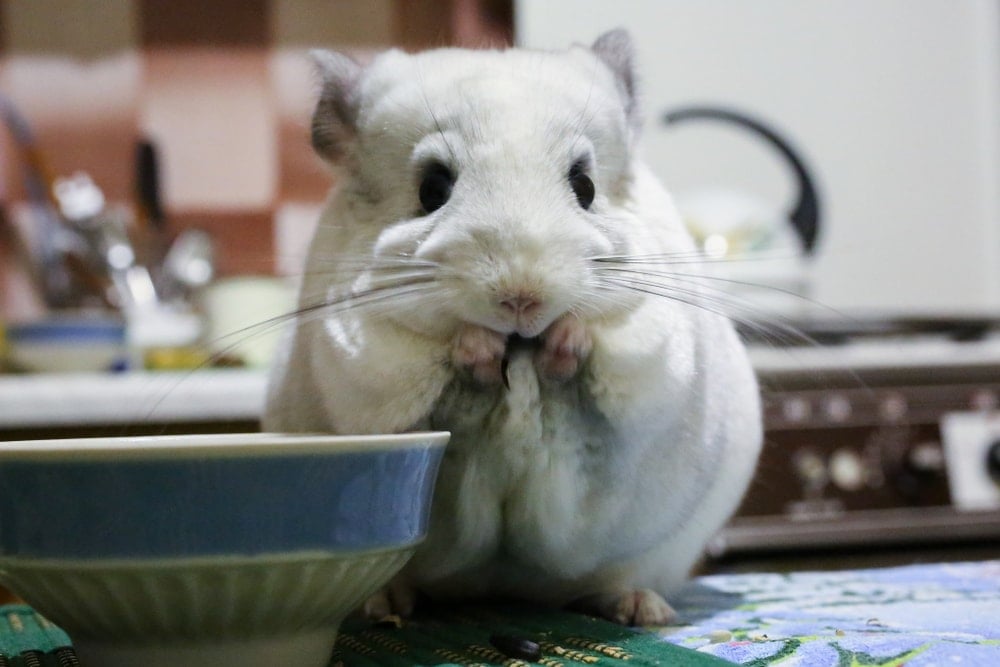
While it might not seem like keeping the blinds open is a big deal, doing so can significantly increase the temperature in your chinchilla’s cage. If your pet is exposed to direct sunlight in the summer months, they are likely to overheat very quickly. It is a good idea to invest in blackout shades for your windows.
Signs that Your Chinchilla is Uncomfortable
There are certain signs that your chinchilla might exhibit if it is uncomfortable due to the temperature of their environment. It is important that you know what some of these signs are so you can identify them as soon as possible.
1. Lethargic Behavior
A chinchilla that is too hot will often become lethargic. You will notice a significant decrease in overall activity. This is definitely a sign that something is wrong.
2. Red Ears
Another common signs of an overheating chinchilla is red ears. While this is normal to see after your pet has engaged in physical activity, it is something to be aware of. If their ears are bright red despite just lying around in their cage, they are probably way too hot. This means that you need to turn down the temperature right away.
3. Salivating
Excess salivation as well as labored breathing are two other things to look out for. These are classic sign of heatstroke, and you definitely don’t want to ignore them. If you notice your furry friend doing either of these things, you need to cool them off fast.
Can Chinchillas get Hypothermia?
Overheating is not the only concern when it comes to chinchillas. If they get too cold in their cage, they can develop hypothermia. This is a potentially life threatening condition that can come on very quickly. This usually only occurs after these animals have been exposed to very cold temperatures for at least a few hours.
Conclusion
- It is best to keep your chinchilla’s environment between 60 and 70 degrees at all times.
- These animals can tolerate extreme heat and cold, but only for short periods.
- Make sure that you limit the amount of physical activity your chinchilla gets in the hotter months.
- You should ideally have a separate room for your chinchilla. This makes it easier to control the temperature at all times.
- Put some cooling pads in your pet’s cage so they have a couple of little areas to relax and lower their body temperature during the summer.
- If your chinchilla’s cage is by a window, you should keep the blinds drawn. Natural light shining down on their cage can quickly raise the temperature.
- Some of the signs that you need to adjust the temperature in your pet’s environment include lethargy, red ears, and labored breathing.
